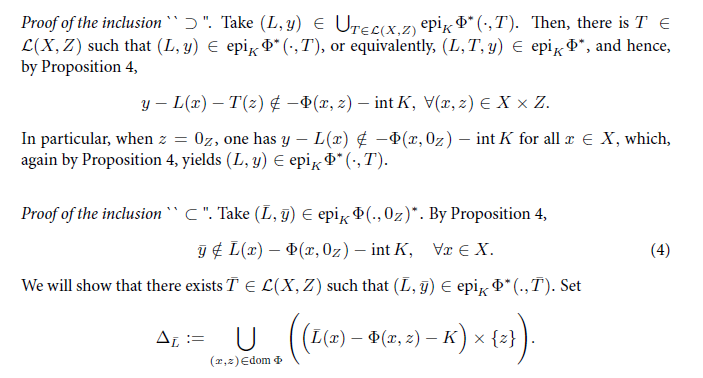
Stable strong duality for cone-constrained set-valued optimization problems: A perturbation approach
- Ho Chi Minh City International University
- Vietnam National Univerisity, Ho Chi Minh City
- Tien Giang University
Abstract
In this paper we consider a general set-valued otimimization problem of the model
Winf F(x), s.t. x in X
where $F\colon X\rightrightarrows Y\cup\{+\infty_{Y}\}$ is a proper mapping. The problem is then embed into a parametric problem and can be express as
(P) $\mathop{\winf}\bigcup\limits_{x\in X}\Phi(x,0_Z)$
where $\Phi\colon X\times Z\rightrightarrows Y^\bullet$ is a proper set-valued {\it perturbation mapping} such that $ \Phi(x,0_Z) = F(x) $. A representation of the epigraph of the conjugate mapping $\Phi^\ast$ is established (Theorem 1) and it is used as the basic tool for establishing a general stable strong duality for the problem (P) (Theorem 3). As applications, the mentioned general strong duality result is then applied to a cone-constrained set-valued optimization problem (CSP) to derive three dual problems for (CSP): The Lagrange dual problem and two forms of Fenchel-Lagrange dual problems for (CSP). Consequently, three stable strong duality results for the three primal-dual pairs of problems are derived (Theorems 4 and 5), among them, one is entirely new while the others extend some known ones in the literature.

